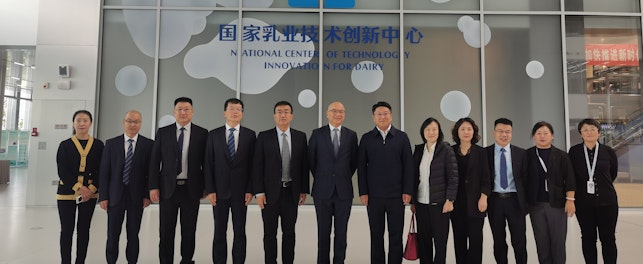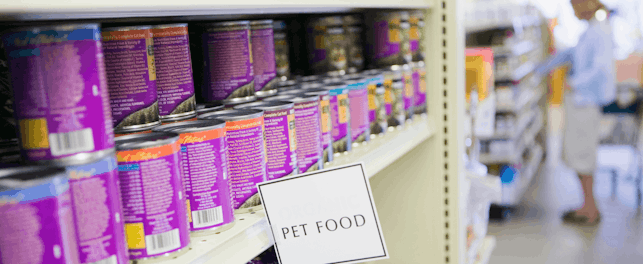Two pathways exist for food and dietary supplement manufacturers entering US markets with new ingredients – GRAS and NDIN. Find out which route you should choose.
Safety is paramount when it comes to food and dietary supplements. When introducing a new product into US markets, the manufacturer must navigate a complex regulatory landscape designed to protect human health. Depending on the product, they may need to ensure compliance with requirements set by the Food and Drug Administration (FDA) or Department of Agriculture (USDA), as well as the Food Safety Modernization Act (FSMA) and labeling conditions regarding nutrition, allergens, claims and ingredients.
Two critical pathways exist for food and dietary supplement manufacturers entering US markets with new ingredients: generally recognized as safe (GRAS) notification and new dietary ingredient notification (NDIN). Which route you choose depends on several factors, including the type of product, potential safety concerns and the proprietary nature of the formulation.
Ingredients matter
Regulators need assurance the ingredients in food products and dietary supplements are safe. In most cases, the ingredients in a formulation will be known and understood by the authorities. However, when developing a new product, it is possible some ingredients may be new to the US market. In these cases, there is the possibility the authorities will consider the ingredient to be an adulteration, which could result in recall, refusal to entry or seizure. The FDA might even issue a warning letter, seek a court injunction or file criminal charges.
Understanding GRAS and NDIN, their nuances and differences, will allow you to choose the appropriate route for your product to ensure regulatory compliance and successful market entry.
GRAS or NDIN?
GRAS is a designation by the FDA that a chemical or substance added to a food has been evaluated and found to be generally recognized as safe for its intended use by qualified experts. It exempts the ingredient from the usual food additive tolerance requirements under the Federal Food, Drug and Cosmetics Act (FFDCA), and is available for ingredients intended for use in both food products and dietary supplements.
There are two pathways to achieve GRAS status:
- Self-affirmed GRAS: the manufacturer conducts its own safety assessment using qualified experts for the determination
- FDA-notified GRAS: the manufacturer notifies the FDA of their self-affirmed GRAS. The FDA reviews the submission and, if it has no questions regarding safety, issues a ‘no questions’ letter
Suppliers of dietary supplements can also consider the NDIN route. Under the Dietary Supplement Health and Education Act of 1994 (DSHEA), an ingredient for a dietary supplement not marketed in the US prior to October 15, 1994, is labeled a new dietary ingredient (NDI). Examples might include new plant extracts or isolated compounds.
A new dietary ingredient notification (NDIN) must be submitted to the FDA at least 75 days before the product is introduced onto the US market. This should contain the following information:
- Identity and composition: Detailed information about the identity and composition of the NDI
- Manufacturing process: Description of the production and manufacturing process.
- Safety data: Comprehensive safety data, including human and animal studies, historical use, and scientific literature, demonstrating that the NDI is reasonably expected to be safe under the proposed conditions of use
Making the right choice
Choosing which regulatory route is best for your product requires gap analysis and consideration of strategic goals. Factors to be considered include whether it qualifies as a dietary ingredient under DSHEA and was it in use as an ingredient in a dietary supplement before October 5, 1994. Consideration should also be given to the level of safety evidence that exists, the proprietary nature of the formulation, target populations and potential safety concerns regarding specific groups (e.g. pregnant women or young children). Finally, you should consider the product’s organoleptic properties, specific ingredient factors (e.g. probiotics or nature-identicals), and your desired approval timeline.
GRAS is the better choice if there is a long history of use and publicly available expert-created safety data. Under this system, the food categories must be selected, and consumption analysis conducted to determine maximum daily intake. In addition, safety data must be available to support the intended level of use. Notification to the FDA is voluntary, but recommended, with a response expected within 180 days from the filing date.
If the ingredient qualifies under the definition of a new dietary ingredient, was not in use in dietary supplements before October 15, 1994, and supporting safety data is not publicly available, then NDIN may be the preferable regulatory strategy route. Under this scheme, use is based on recommended intake, and you can exclude higher-risk populations (young children, pregnant mothers, etc.). Under this scheme, notification to the FDA is mandatory, with the FDA responding within 75 days.
Both routes have advantages, but which route you should take will depend on several factors. Choosing the right path for your ingredient is difficult without expert support and, if you choose the wrong route, you might experience unnecessary delays.
SGS solutions
Partner with SGS for unrivaled expertise in filing GRAS and NDIN. We work with your team, guiding you towards the optimal regulatory route for your product. Our experts can conduct comprehensive gap analyses, oversee necessary testing, assemble safety and manufacturing data, and meticulously prepare and review your final dossier for submission.
- Claim substantiation
- Master file submissions to Health Canada
- Intellectual property protection strategies
- Laboratory-based product certifications
- Novel food dossiers for the UK, EU, Canada and South Korea
- Branded ingredient strategies
- Efficacy study design and execution for global markets
With a greater than 90% success rate, partner with us and ensure a seamless regulatory compliance journey.
Amy Mozingo
Vice President of US Nutra Regulatory Sciences,
SGS Nutrasource
t: +1 301-461-8929
About SGS
We are SGS – the world’s leading testing, inspection and certification company. We are recognized as the global benchmark for sustainability, quality and integrity. Our 99,600 employees operate a network of 2,600 offices and laboratories around the world.



